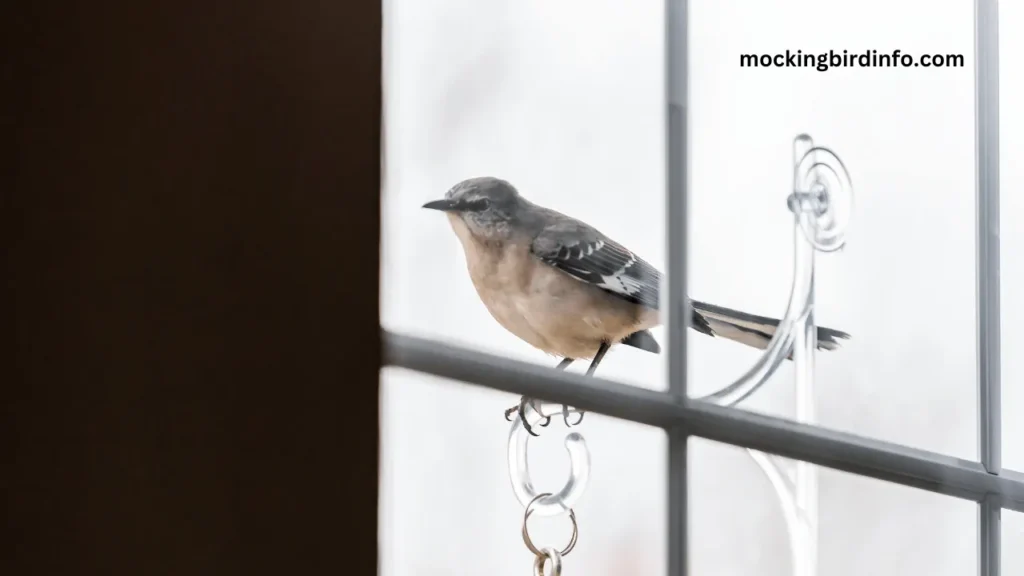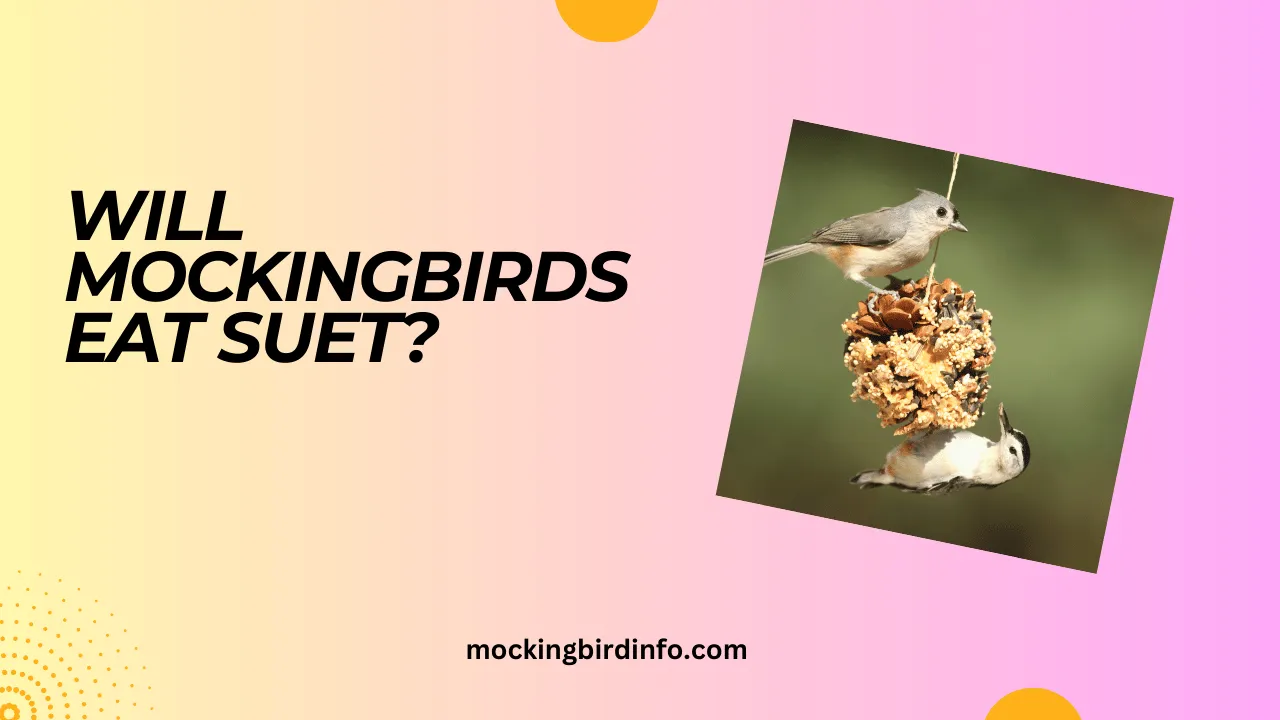The northern mockingbird, known for its melodious songs and mimicry, is a bird of many surprises. Their diverse feeding habits, ranging from devouring insects to nibbling on fruits, often leave bird enthusiasts curious about what else might be on their menu.
A question that frequently arises is, will mockingbirds eat suet? Understanding their dietary tendencies and preferences can reveal a great deal about these fascinating creatures.
While mockingbirds are primarily insectivores, they are also opportunistic feeders, adapting their diet based on what’s available in their environment.
This adaptability has led to occasional sightings of mockingbirds exploring suet feeders, particularly during colder months or when their usual food sources are scarce.
For backyard bird watchers, the possibility of enticing a mockingbird with suet presents an exciting opportunity to observe their behaviors up close.
In this article, we’ll delve into the dietary habits of mockingbirds, factors that influence their willingness to eat suet, and the pros and cons of offering suet. By the end, you’ll know how to create a bird-friendly space that might just attract these delightful avian visitors to your backyard.

Contents
The Mockingbird’s Diet
Mockingbirds have a versatile diet that reflects their adaptability to different environments.
- Insects as the Primary Staple: Mockingbirds are primarily insectivorous, meaning their diet consists mostly of insects like beetles, grasshoppers, and caterpillars. These protein-rich meals are especially vital during the breeding season when they need extra energy to care for their young.
- Fruits for Variety: As the seasons change, mockingbirds turn to fruits, especially in fall and winter. Berries, grapes, and figs are favorites, providing them with essential nutrients and energy.
- Opportunistic Feeding Habits: Mockingbirds are opportunistic, meaning they’ll adapt to new food sources when needed. This includes suet, particularly during harsh winters or in urban areas where natural food may be limited.
Their ability to thrive in various conditions highlights why understanding their feeding patterns can help bird enthusiasts provide better support.
Factors Influencing Suet Consumption
Mockingbirds don’t naturally gravitate toward suet, but several factors can encourage them to try it.
- Seasonal Food Scarcity: During winter, when insects are scarce, mockingbirds may explore suet feeders for the fat and energy they offer.
- Nutritional Needs: Suet is rich in fats and proteins, making it an excellent supplemental food source during periods of high energy demand, such as migration or cold weather.
- Individual Preferences: Not all mockingbirds are alike. Some may ignore suet altogether, while others might develop a taste for it depending on their past experiences or local food availability.
- Feeder Accessibility: If the suet feeder is easily accessible and placed near other preferred food sources like fruits, mockingbirds may be more inclined to visit.
Understanding these factors can help you determine when and how to introduce suet in your backyard.

Potential Benefits and Drawbacks of Suet Feeders
Providing suet can have both advantages and disadvantages, especially when it comes to mockingbirds.
Benefits:
- Attracting Mockingbirds and Other Birds: Suet feeders are a magnet for a variety of bird species, including woodpeckers and chickadees, which may draw the attention of curious mockingbirds.
- Supplemental Nutrition: Suet is a high-energy food that can help birds survive during food shortages.
- Enhancing Birdwatching Opportunities: Observing birds at a suet feeder offers a chance to witness unique behaviors, like how mockingbirds interact with other birds.
Drawbacks:
- Disease Risk: Dirty feeders can spread diseases among birds, so regular cleaning is essential.
- Unwanted Visitors: Suet feeders can attract pests like raccoons, squirrels, and even rodents.
- Potential Dependency: Over-reliance on feeders might reduce birds’ natural foraging instincts.
Weighing these benefits and drawbacks can guide you in using suet feeders responsibly.
Tips for Attracting Mockingbirds
If you’re eager to entice mockingbirds with suet, follow these tips to increase your chances.
- Choose High-Quality Suet: Offer suet without fillers like corn or milo. Opt for varieties with added berries or seeds that appeal to mockingbirds.
- Place Feeders Strategically: Mockingbirds prefer open areas with nearby cover. Position feeders in a safe and visible location, such as near trees or shrubs.
- Maintain Clean Feeders: Clean suet feeders regularly to prevent mold and the spread of diseases.
- Create a Bird-Friendly Yard: Plant native fruit-bearing shrubs and provide a consistent water source to make your yard irresistible to mockingbirds.
By combining these strategies with patience, you may soon find mockingbirds exploring your backyard suet feeders.
Conclusion
Mockingbirds are adaptable and resourceful feeders, primarily thriving on insects and fruits. While suet isn’t a primary food source for them, they may consume it during times of scarcity or high energy demand.
Offering suet can benefit both birds and bird enthusiasts, but it requires a balance of responsible feeding practices and consideration for the potential downsides.
If you’re keen on inviting mockingbirds into your yard, remember that a holistic approach is best. Combine suet with other food sources, native plants, and clean water to create an environment where mockingbirds and other wildlife can flourish.
Ultimately, feeding birds is not just about convenience—it’s a step toward fostering a deeper connection with nature.
FAQs
1. Do mockingbirds naturally eat suet?
Mockingbirds are not naturally inclined to eat suet, but they may consume it during food shortages or harsh winters.
2. type of suet do mockingbirds prefer?
Mockingbirds might prefer suet with added fruits like berries or raisins over plain suet blocks.
3. Can suet harm mockingbirds?
Suet is safe when fed in moderation, but spoiled or moldy suet can harm birds.
4. Why don’t all mockingbirds eat suet?
Individual preferences and local food availability play a role in whether a mockingbird will eat suet.
5. When is the best time to offer suet to mockingbirds?
Winter or early spring, when natural food sources are scarce, is the best time to offer suet.
6. How can I prevent pests from accessing my suet feeder?
Use squirrel-proof feeders or hang suet in areas difficult for pests to reach.








